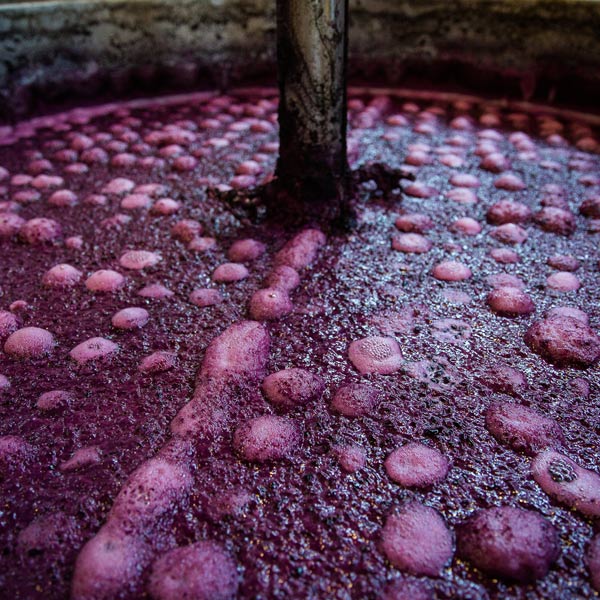Submerged Cap Fermentation
Blog Post
The cycles of a harvest are a sight to take in. From the feverish pace of vineyard crews picking grapes to the meticulous team managing their arrival at the winery, there’s an incredible amount of energy, collaboration, and orchestration required to successfully guide the process of grapes becoming wine. Now, with our fermentors full and the rest of the grapes in, it seems a good time to touch on a somewhat unusual practice we still employ with some fermentations: chapeau submergé, or “submerged cap.” Here, Paul Draper describes the history of this practice at Ridge.

“One of the things that Dave Bennion (the founder in charge of winemaking) brought to the Ridge tradition— something that we have carried on, and use today with some of our zinfandels—is submerged cap fermentation. It started with a large tub in which he was fermenting the thirty gallons of ’59 Monte Bello (made before we decided to re-bond our 19th-century winery). Dave and his wife, Fran, were going on vacation. Unable to perform the essential daily function of “punching down the cap,” he built a wooden grid to hold the cap of grape skins below the surface of the liquid. He and Fran were away for two weeks; when they returned, the wine was dry. He pressed it, put it in a half-barrel, aged it (racking every six months), and bottled it. Dave’s use of that grid was a very old technique which I’m sure he had read about—used widely in France and elsewhere in Europe in the 19th century and to a lesser extent in the 20th—called submerged cap fermentation.
“When I joined Ridge in ’69, we had one four-ton fermentor; we soon introduced another and a number of one-ton tanks. They were open-topped, and had wooden grids with which the grapes could be held submerged. Before 1967, Dave was still working at Stanford Research Institute (SRI), as were the other partners. During harvest they would come up on weekends, pick any grapes that were ripe, crush them, put them in a fermentor, submerge the cap, and go back to their jobs for the week, returning to Ridge the next weekend. For those early vintages, submerged cap was essential. It assured that the grape skins would not be exposed to air and develop acetic acid. It allowed the partners to make sound and incredibly intense wines right from the start—despite being unable to watch over them through the week.
“By ’71, I moved the winemaking operation to the old Monte Bello winery, which had been purchased in 1968, and was just a mile up the road. I ordered three 2000-gallon stainless steel tanks from the Mueller Company. In the first year, we built wooden grids to submerge the cap in those closed fermentors. For the next vintage, I designed a stainless steel grid and support system to fit four new tanks. Through the 1970s, we used the approach for both cabernet and zinfandel. By the ’80s—to better control tannin extraction in cabernet—we switched to pumping over the cap. We continue to use submerged cap for slow, full extraction in some of our less tannic zinfandels.

“One thing that was a joy to discover, and which Dave had not known when he introduced this old method: When Mid-Peninsula Open Space District bought the 19th-century Picchetti ranch, below us on the Ridge, they began to renovate the old winery buildings. In the vat house, they found large open-top fermentors and huge, circular, redwood grids. When asked about them, I realized they had been used from the 1870s on to submerge the grapes during fermentation. There is good reason to believe there had been similar grids used for submerged-cap fermentations at the old Monte Bello winery as well. I don’t know how typical this method was in California before Prohibition, but those huge redwood grids are stacked against the wall at Picchetti today. In 1959, we were just re-discovering an approach that had been traditional in our area for well over a hundred years.”
—Paul Draper
Wait!
In order to qualify for user related discounts, you must log in before proceeding with checkout. Click the button below to log in and receive these benefits, or close the window to continue.
Log In